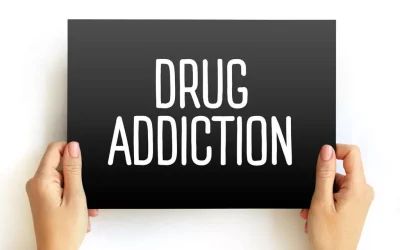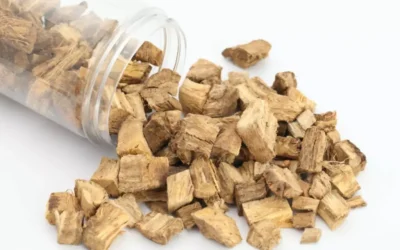Alcoholic Nose Rhinophyma: The Real Cause, and How to Treat It
The idea is to drive home the point that negative emotions, thoughts, and legacies don’t have to affect the present. This medication restores the balance between the excitation and inhibition of neurons. It’s safer than the other medications because it’s not reliant upon the liver, so there is no danger of hepatotoxicity. If they’re not satisfied with your answers, or they simply need more information, then they might also ask you for permission to speak with your friends, colleagues, and family members. “[Rhinophyma–diagnosis and treatment].” Polish Journal of Otolaryngology, 2004.

Change Your Life Today.
Contrary to the stereotype that rhinophyma is caused by alcohol or alcoholism, rosacea is actually the cause of rhinophyma. You might be familiar with a pervasive stereotype of alcoholics having a red face or a plump, bulbous kind of nose. At Georgetown Behavioral Hospital, you can take your addiction recovery journey one step at a time. During your time in our inpatient rehab setting, you will learn effective coping strategies to handle life’s daily stressors without using substances. Other factors that can contribute to a rhinophyma flare-up include intense exercise, some medications, excess stress, spicy foods, and extreme temperatures. At Alcohol Awareness, we seek to provide just that kind of multi-pronged approach.

Hair Loss Due to Rosacea
Red face after drinking alcohol: Causes and prevention – Medical News Today
Red face after drinking alcohol: Causes and prevention.
Posted: Mon, 01 Jul 2019 07:00:00 GMT [source]
People who have rosacea may not develop an alcoholic nose until years later. Alcohol use can worsen a red nose, also known as rhinophyma, but doesn’t cause it to occur. Some people become red-faced or flushed when they drink alcohol, and this is determined by ethnic background and genetics. Once a person has gone through detox, then the rest of the treatment strategies are lifelong. It is also grossly unfair to heap stigma upon someone who misuses alcohol.
Alcoholic Nose Explained (Gin Blossom Nose and Rhinophyma)
- While drinking may not cause “alcoholic nose,” getting help to quit drinking can make the condition much easier to manage.
- This is a great tool for those looking to stop drinking because of alcoholic nose.
- Rosacea flare-ups could contribute to continued growth of a bulbous nose.
- However, if severe cases are left untreated, it can cause disfigurement.
- Rosacea is a chronic skin condition that affects the blood vessels in the face, leading to a flushed appearance of the facial skin.
- The nose may also have a purple-colored appearance and could be mistaken for having warts or other skin blemishes that look like protruding lumps.
The condition is understood and treated as a condition that is totally separate from alcohol use disorder. The sad truth is that people who suffer from rosacea, rhinophyma, or both become unfairly targeted, mocked, and judged as Gopman et al., showed in a 2015 study. The condition can become so bad that the nose will swell shut, necessitating surgery so that the person can breathe normally and easily again. Surgical therapy, along with topical treatments, are incredibly effective for helping return the nose to its original shape without harming the bone and cartilage structures.
- Because of this, people who drink a lot or increase their alcohol intake over time and also have rosacea may experience increased side effects — including alcoholic nose.
- “Alcoholic nose” is a slang term that is used to describe a red, bumpy, and swollen nose that is thought to be caused by a large amount of drinking.
- If you or a loved one suffers from alcoholism, please get in touch with our alcohol rehab in Orange County immediately.
- “Alcoholic nose” is a term given to the medical condition rhinophyma when it’s thought to be caused by alcohol use.
- All Addiction Resource content is medically reviewed or fact checked to ensure as much factual accuracy as possible.
- At Alcohol Awareness, we seek to provide just that kind of multi-pronged approach.
- Alcohol addiction can lead to neglect of nutrition and hygiene and may lead to weight loss.
Few long-term studies have explored how often rhinophyma recurs after surgery, though limited research suggests that this is possible. Although rosacea is commoner in females, the incidence of rhinophyma is higher in males. Rhinophyma typically afflicts white males between the age of 40 and 60 years, and is more common in men why do alcoholics have big noses with English or Irish descent. Feeling so self-conscious about the appearance of a nose with rhinophyma can become a great source of anxiety for some people. Now, does this mean that alcohol is completely unrelated to rhinophyma? Rosacea can affect anybody but it most often affects middle-aged women with lighter skin tones.
While anyone can develop rhinophyma, it’s most commonly reported in white males, especially over age 50. Experts theorize that androgenic hormones found in males may trigger rhinophyma. However, these treatment methods have not been effective for reducing swelling or the appearance of bumps on the nose from rhinophyma.
Tell them about your struggles and how your alcoholism is agitating your rosacea. Although this is not rosacea, it can worsen the effects and symptoms of rosacea in people who suffer from it. Just because they have swelling and discoloration around the nose does not mean they are an alcoholic. This stigma has caused many people to feel uncomfortable and ostracized from society. The issue is that rhinophyma has absolutely nothing to do with alcoholism.
Treatment For Alcohol Nose
Even a single alcoholic drink can cause flare-ups for many people with this condition. A survey by the National Rosacea Society found that red wine was the most common culprit, followed by white wine and beer. However, recent research has suggested that while alcohol worsens the symptoms of rhinophyma, it is not the primary cause. Some people who do not have rosacea may also develop rhinophyma, and the exact cause is unknown. Therefore, a common cause of rhinophyma is having long-term rosacea.
- Rosacea is identified by reddening and thickening of the skin, pitting and scarring, broken blood vessels, and disfigurement or bulging of the nose.
- What is commonly called “alcoholic nose” is actually a skin condition called rhinophyma (Greek for “nose growth”).
- The best way to treat rhinophyma is to prevent it from developing in the first place through proper diagnosis and treatment of early-onset rosacea.
- The first sign of the condition is facial reddening due to broken capillaries.
There is no cure for rhinophyma, and it typically does not go away without surgery. While the underlying causes aren’t fully understood, early treatment is considered the most effective solution. By contrast, people with more advanced cases may be prescribed topical ivermectin, oral isotretinoin, or brimonidine. Some people might be prescribed a low dose course of isotretinoin (Accutane) to help shrink enlarged oil glands that might also be contributing to skin thickening and symptoms.